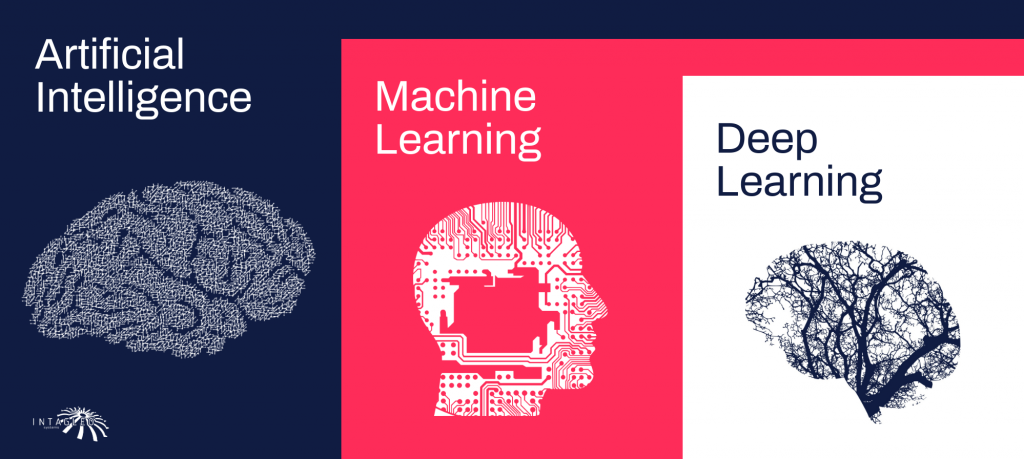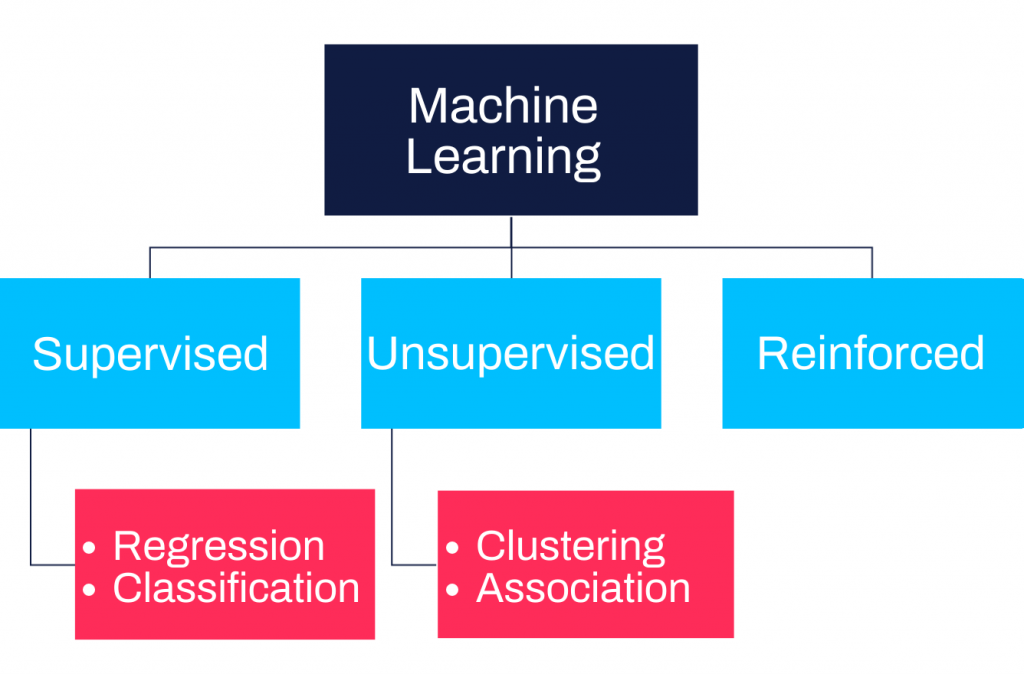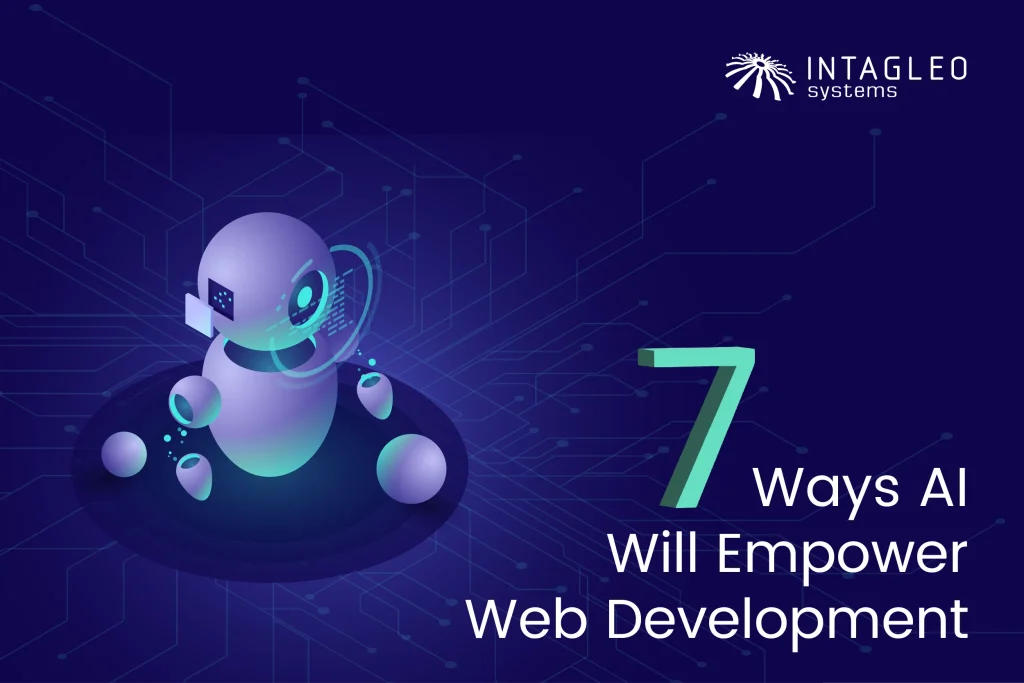Championed as solutions to many of our challenges, both old and new, Artificial Intelligence and Machine Learning are hot topics among researchers and industry experts alike. The proponents of these technologies show no signs of going mum anytime soon and their popularity will only soar in the coming years as IDC predicts that worldwide spending on cognitive and Artificial Intelligence systems will reach $77.6 Billion in 2022.
While some are already hard at work figuring out ways to capitalize on this technology, others are in two minds about what ML is and how can it boost business performance. This article will attempt to answer some of the most quintessential questions about this technology and equip readers with the basic knowledge to get started with this life-changing innovation.
So let’s get started.
What is Machine Learning? Comparison with Artificial Intelligence and Deep Learning [Infographic]
First things first – It can be a little daunting to wrap your head around the specifics of it. Moreover, terms like Artificial Intelligence, Machine Learning, and Deep Learning have become buzzwords over the years, which has complicated matters even further. However, contrary to what all the marketing hype would have you believe, it’s essential to draw a distinction between these terms as well as understand how they relate to one another.
Artificial Intelligence
AI is a branch of computer science that deals with enabling machines to imitate human behavior and nature. While the idea of intelligent machines dates back to antiquity, Artificial Intelligence, as we know it, only became popular recently due to the availability of copious amounts of data and the computational power and storage capacities needed to handle it.
Artificial Intelligence is, in fact, a broader term that encompasses ML & DL, as well as other vital technologies you may have encountered, such as visual recognition, natural language processing, and more.
It’s fair to say that AI has quickly become a big part of our lives. Artificial Intelligence examples range from virtual assistants that respond to all our commands to advanced systems that tackle unfamiliar situations without any human intervention at all, and everything in between.
Machine Learning
Arthur Samuel coined the term Machine Learning in 1959. He defined it as a “field of study that gives computers the ability to learn without being explicitly programmed.”
It is a subset of AI that relies on statistical techniques to enable algorithms to learn and improve as they come across new data.
Datasets are analyzed to identify patterns and correlations so that ML algorithms can extrapolate these to make better decisions when they come across new data. The ultimate goal here is to enable these algorithms to eventually make these decisions without any human assistance.
However, not all classes of ML algorithms can do just as well without any human interference when exposed to unfamiliar data. They require intervention by data scientists if the results are not accurate.
Deep Learning
Deep Learning algorithms are perhaps best described as a special breed of Machine Learning algorithms. They are ‘deep’ because they feature a hierarchical network of ML algorithms, where each algorithm’s interpretation is different. Analogous to the human neural network in the brain, such algorithmic systems are also called artificial neural networks.
As datasets are passed through different layers in the neural network, each layer hierarchically defines and extracts specific features from the dataset. Therefore, Deep Learning algorithms don’t necessarily require the input datasets to be labeled to train themselves, unlike most other ML algorithms. They can learn and make informed decisions based on what they have learned.
Moreover, since deep learning algorithms don’t require labeled data, they are much better suited for handling complex queries, involving big data.
However, these algorithms also require boatloads of data, as well as more computational power than other Ml techniques due to the added complexity.
Types of Machine Learning Algorithms and Approaches
Supervised Learning
In supervised learning, both input data and corresponding output data are available and labeled, so that the function that maps the inputs onto outputs can be approximated. The approximated function can be later used as a basis for predicting outputs for new, unlabeled inputs. The learning algorithm is trained iteratively and adjusted until it’s able to predict outputs within an acceptable margin of error.
Examples of Supervised Learning include:
● Regression
This is the process of taking input data and finding a function that maps it to the given output data. Regression is used when the output is a potentially infinite number of continuous variables. The approximated function can be used to predict the next value based on previous values.
● Classification
This is the process of taking input data and finding out the underlying principle used to map it to some discrete set of labels. By understanding how the given data is classified, the learning algorithm can be trained to organize a new observation into different categories.
Unsupervised Learning
Unsupervised learning is when an algorithm is only given input data, but no corresponding output data to act as a training set. Unlike supervised learning, the goal here isn’t to come up with a function that predicts outputs but to derive some sense of structure just by analyzing the unlabeled input data. The structure helps us describe the data and uncover useful ways to group or divide it.
While unsupervised systems can tackle more complex processing tasks than supervised learning and are less prone to algorithm bias, they tend to be more unpredictable and imprecise.
Examples of Unsupervised Learning include:
● Clustering
This method is akin to unsupervised classification. Labels are derived from the input data and used to classify them into meaningful clusters.
● Association
Association rule learning is used for uncovering interesting associations and relationships among items in large datasets. The data is analyzed for if-then patterns to identify interesting correlations and how frequently they occur.
Reinforcement Learning
On the surface, the Reinforcement Learning system looks quite like Supervised Learning. However, unlike a supervised learning system, it learns the environment through trial & error instead of relying on a training dataset to approximate a general formula that describes it. To get the system to produce a desirable outcome, its actions at each stage are either rewarded or punished.
While there can be different possible outputs, the goal in Reinforcement Learning is to find a suitable sequence of actions that maximizes reward in a given environment, i.e., an optimal solution.
With the more technical bits covered, let’s take a look at some of the unique ways ML is helping businesses and industries streamline their processes and boost performance.
Popular Applications and Use Cases of Machine Learning
Machine learning in Banking and Finance: Automated Advice, Credit Scoring, Algorithmic Trading
Leading banks and financial services companies are quickly incorporating machine learning into their processes in a number of exciting ways and leveraging them to make the most of the abundant datasets they already have at their disposal.
An obvious way in which Machine Learning has helped finance companies streamline processes and cut down on operational costs is through the use of ML-powered automated financial advisory based on specifically tailored algorithms and proven strategies. This has allowed them to engage more clients by offering remote access to quality financial services such as financial advice, portfolio, and investment management, whenever they need them.
Credit Scoring is another area where banks and insurance companies have put ML to good use. By training algorithms on large amounts of consumer data, these institutions can use them to identify trends, useful for assessing loan applicants with little to no available credit history.
Lastly, the use of ML & data sources in Algorithmic Trading helps clients make better trading decisions. Trades can be carried out accurately and instantly at the best possible rates while minimizing human error.
See in action: JP Morgan’s COIN
Machine Learning in Healthcare and Medicine: Diagnosis, Prognosis, Clinical Research, & Drug Development
Like other areas of science and technology, Machine Learning has had a profound impact on various aspects of healthcare and medicine, including drug development, diagnosis, prognosis, and clinical research.
Thanks to ML, diseases that are likely to go undetected (i.e., certain cancers in their initial stages, genetic disorders) can now be identified and diagnosed. Similarly, researchers are also working on developing and refining algorithms for diagnosing heart diseases.
Besides identifying current medical conditions, ML can help predict future ones as well. While sifting through voluminous medical data poses a challenge, data scientists are making effective use of ML techniques for the prognosis of conditions such as liver disease and diabetes.
Additionally, the use of ML techniques in Clinical Trials and Drug Discovery is also gaining traction. Not only do these help stakeholders reduce costs and manage resources efficiently, but they also lead to fewer failures and data-based errors.
Machine Learning in Cyber Security: Fraud Detection
With security threats on the rise, machine learning has become increasingly significant in this domain. Moreover, as hackers continue to develop new ways to bypass existing security protocols, new ML techniques will have to be developed & deployed to stay ahead of them.
Owing to their ability to quickly process big data, machine learning algorithms have proven to be useful for detecting cyber threats. In a nutshell, they use this information to establish a baseline and flag any deviations from the norm to predict potential threats and breaches, which can then be confirmed upon further investigation.
This is especially helpful in identifying suspicious account behaviors and detecting fraudulent transactions. If a transaction gets flagged as fraudulent to a high enough probability, ML techniques can even block it before it completes.
Machine Learning in Marketing: Lead Scoring, Personalization, $ Sentiment Analysis
Marketers around the world are already putting Machine Learning to good use to improve their marketing campaigns, boost sales, and drive engagement by enhancing the customer experience. Netflix saved $1 billion in 2017 by using machine learning to make personalized recommendations.
ML helps make lead scoring methods more robust and reliable. By actively monitoring and processing user behavior data, ML helps marketers paint a more accurate profile of their prospects and qualify ones that can offer them more value.
By assessing how a customer interacts with their mobile and web platforms, ML algorithms also help marketers better target their intended audiences and provide them personalized experiences. Significantly improving customer engagement and click-through rates.
Moreover, Sentiment Analysis via ML can help marketers better understand how customers feel about their products and services. Whether it’s direct correspondence with your brand or comments on social media, ML algorithms can help deduce positive & negative customer sentiments. – Allowing businesses to make informed decisions.
Through the continuous evolution of techniques and increasing adoption across industry verticals, it’s evident that Machine learning is destined to be an even bigger player than it is presently.
One needs to look no further than how much the likes of Google and Amazon are investing in this technology as well as the staggering rate at which advances are being made by researchers at DeepMind and OpenAI, to ascertain how big a role ML will play in our lives in the near future.
Intagleo has extensive experience in machine learning software development. Our AI experts have delivered top-of-the-line, custom machine learning programs as well as supervised, unsupervised, and reinforcement learning neural networks to our clients from around the globe. Contact us today for a free AI and Machine Learning consultation session.





2 Responses
your article on data science is very interesting thank you so much.
Interesting Blog